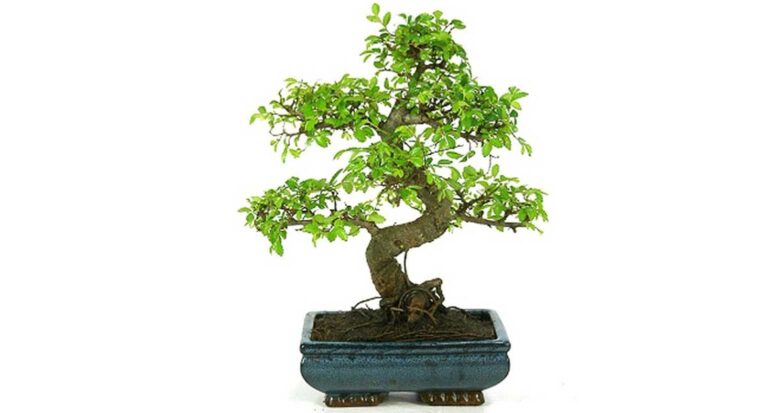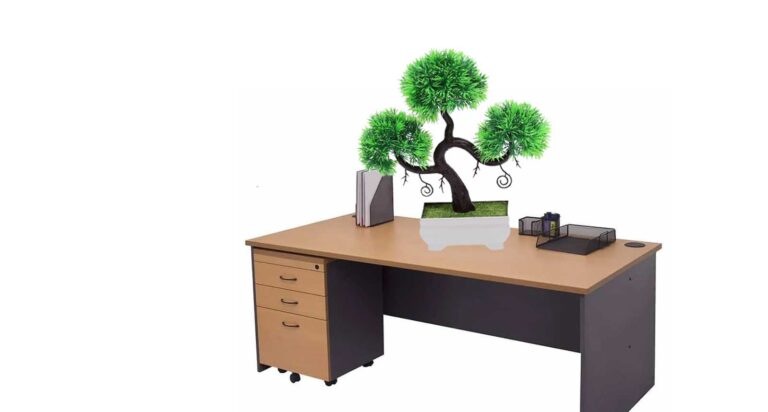How Big Do Bonsai Trees Get?
Welcome to the enchanting world of bonsai, where the artistry of cultivation meets the curiosity of nature.
In this exploration, we delve into the question that echoes in the minds of many aspiring bonsai enthusiasts: How big do bonsai trees get?
Unveiling the secrets and intricacies, this guide is your key to understanding the fascinating dimensions of these miniature wonders. Let’s embark on a journey of discovery and mastery.
Indoor Bonsai Trees: How Big Do They Get?
Indoor bonsai trees bring the allure of nature into your living space, adding a touch of tranquility to your home.
Influence of Species
The size of indoor bonsai trees varies significantly based on the species you choose. Some species naturally remain petite, making them ideal for confined spaces.
Others may gradually reach larger dimensions, demanding more strategic placement within your home.
Container Constraints
The size of the container plays a crucial role in determining how big your indoor bonsai tree will grow.
Limited root space encourages controlled growth, but it’s essential to choose a pot that allows for both aesthetic appeal and the well-being of your miniature masterpiece.
Pruning and Training Techniques
Mastery of pruning and training techniques empowers you to sculpt the size and shape of your indoor bonsai tree.
By understanding these methods, you gain the ability to harmonize the natural growth tendencies of your tree with your desired size specifications.
Whether you’re a seasoned enthusiast or a newcomer to the art of bonsai, these insights will guide you in cultivating an indoor bonsai tree that perfectly fits your space and aesthetic preferences.
Can a Bonsai Reach 6 Feet Tall?
There’s a common misconception that bonsai trees are confined to petite proportions, but let’s debunk the myth and explore the possibility of a bonsai reaching an impressive 6 feet in height.
Exceptional Cases
While most bonsai trees are intentionally cultivated to remain small, certain species have the potential to grow taller under specific conditions.
Understanding the unique characteristics of these species and providing the right environment can result in a bonsai that defies the conventional size expectations.
Art of Scaling
Scaling up a bonsai requires a delicate balance of horticultural expertise and artistic vision.
Skillful pruning, meticulous training, and attentive care contribute to the controlled growth of a bonsai while maintaining its aesthetic appeal.
Environmental Factors
The size a bonsai achieves is also influenced by environmental factors such as sunlight, humidity, and soil quality.
By optimizing these conditions, you can encourage a bonsai to reach greater heights while preserving the grace and charm that define this ancient art form.
Classic image of a small bonsai is prevalent, the potential for a 6-foot-tall bonsai exists for those willing to embrace the challenge and artistry involved in cultivating such a unique specimen.
Maximum Age of Bonsai Trees
Embarking on the journey of bonsai cultivation is akin to entering a timeless realm where age and beauty intertwine.
But just how long can these miniature marvels defy the passage of time?
Perennial Patience of Bonsai
Bonsai trees are revered for their longevity, with some specimens surpassing a century in age. The key to their enduring existence lies in the meticulous care and attention bestowed upon them.
By understanding the unique needs of each species and providing a nurturing environment, enthusiasts can witness their bonsai trees gracefully mature over the years.
Species-Specific Longevity
Different species of bonsai trees boast varying lifespans. Some are known for their ability to thrive for several hundred years, while others may have a more modest but equally awe-inspiring lifespan.
Delving into the specific characteristics of your chosen bonsai species will unveil the potential for a tree that stands the test of time.
Legacy Continues
Bonsai cultivation is not just a hobby; it’s a legacy. As caretakers, we have the privilege of passing these living artworks through generations.
The maximum age of a bonsai tree is not merely a numeric value; it’s a testament to the enduring connection between nature, craftsmanship, and the human spirit.
Bonsai’s temporal tapestry, discover the profound beauty that unfolds with each passing year, nurturing a legacy that transcends the boundaries of time itself.
Can Bonsai Thrive in Regular Soil?
The choice of soil is a fundamental aspect of successful bonsai cultivation, raising a common question among enthusiasts: Can bonsai trees flourish in regular soil?
Essence of Bonsai Soil
Bonsai trees have specific soil requirements that differ from conventional garden soil. While regular soil may contain adequate nutrients, the unique demands of bonsai cultivation call for a well-draining mix.
Bonsai soil encourages optimal water retention and aeration, safeguarding the delicate balance essential for the tree’s health and growth.
Art of Soil Composition
Crafting an ideal soil mix for bonsai involves a blend of components like akadama, pumice, and lava rock.
This specialized mixture ensures proper drainage, preventing waterlogged roots and promoting aeration—an essential foundation for a thriving bonsai.
Adaptation and Success
While bonsai trees may technically grow in regular soil, their long-term health and vitality depend on a soil composition tailored to their unique needs.
By understanding the art of soil adaptation, enthusiasts can provide the optimal environment for their bonsai to flourish and express its true beauty.
In this exploration of soil dynamics, unlock the secrets to nurturing a bonsai that not only survives but thrives in its carefully curated environment.
Nurturing Nature’s Timeless Art
In the intricate world of bonsai cultivation, the journey unfolds with questions, myths, and a profound connection to nature.
From unraveling the dimensions of these miniature wonders to exploring the soil beneath their roots, each aspect contributes to the artistry and legacy of bonsai.
As you delve into the nuanced art of bonsai, remember that the size, height, age, and soil are not just technicalities; they are threads woven into the rich tapestry of a living masterpiece.
Whether you envision a towering 6-foot-tall spectacle or a bonsai that stands the test of centuries, the key lies in understanding, patience, and the harmonious dance between caretaker and tree.
So, embark on this journey with confidence, armed with the knowledge to sculpt and nurture your bonsai into a timeless work of art.
As you tend to these miniature companions, you become not just a cultivator but a steward of nature’s beauty, creating a legacy that transcends the boundaries of time.
Frequently Asked Questions About Bonsai Trees
Q: How big do bonsai trees typically get?
The size of bonsai trees varies depending on factors like species, care, and environmental conditions. While most bonsai are intentionally kept small, certain species can reach heights of a few feet with proper care and cultivation.
Q: Can bonsai trees be grown indoors?
Yes, many bonsai species can thrive indoors. However, it’s essential to choose the right species, provide adequate light, and understand the impact of container size on their growth.
Q: Is it possible for a bonsai tree to be 6 feet tall?
While the classic image of bonsai is small, certain species and careful cultivation techniques can result in larger specimens, including those reaching heights of 6 feet. It requires skillful pruning, training, and a deep understanding of the specific tree’s needs.
Q: What is the maximum age a bonsai tree can reach?
Bonsai trees can live for many decades, and some species have been known to surpass a century with proper care. The maximum age varies depending on the species, care routine, and environmental conditions.
Q: Can bonsai trees grow in regular soil?
While bonsai trees can technically grow in regular soil, they thrive best in a well-draining bonsai soil mix. This specialized mixture ensures proper water retention, aeration, and overall health for the bonsai.
Q: How often should I water my bonsai tree?
The frequency of watering depends on factors such as species, climate, and the type of soil. It’s crucial to check the soil’s moisture level regularly and water when the top layer feels slightly dry, ensuring not to overwater.
Q: Do bonsai trees require special care during different seasons?
Yes, bonsai trees may require adjustments in care during different seasons. This includes adapting watering frequency, providing appropriate sunlight, and protecting them from extreme weather conditions.
Q: Can anyone cultivate and care for a bonsai tree?
Yes, with dedication and a willingness to learn, anyone can cultivate and care for a bonsai tree. Beginners are encouraged to start with hardy species and gradually expand their knowledge and skills in bonsai cultivation.







